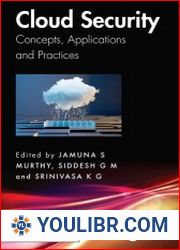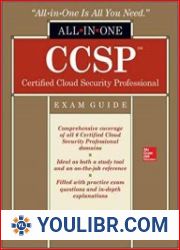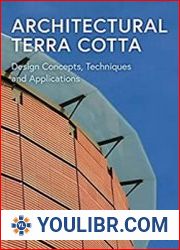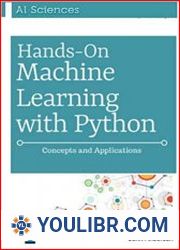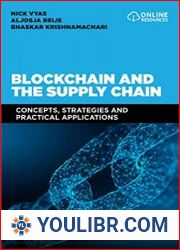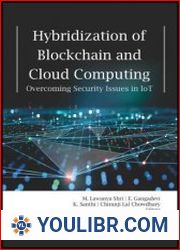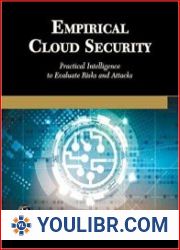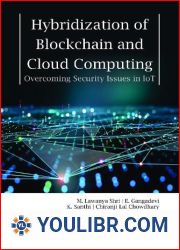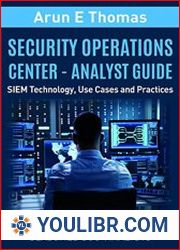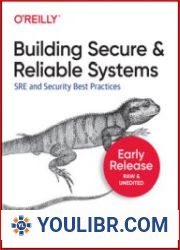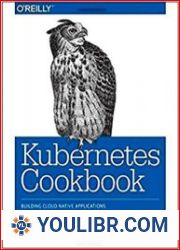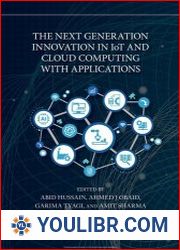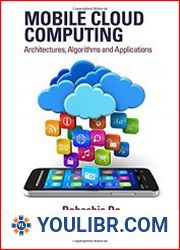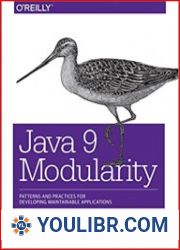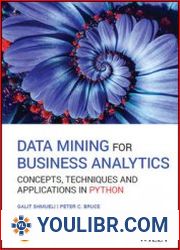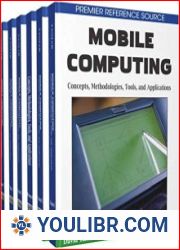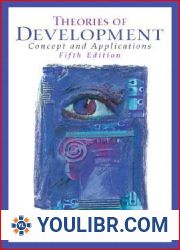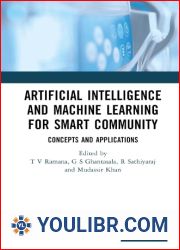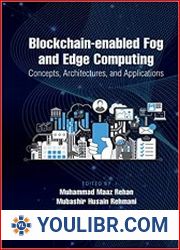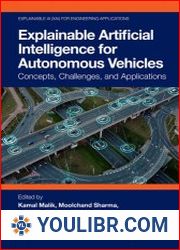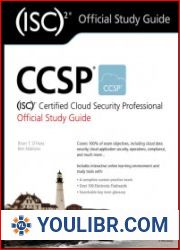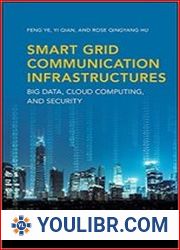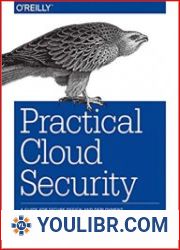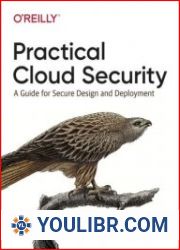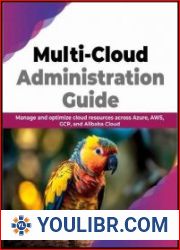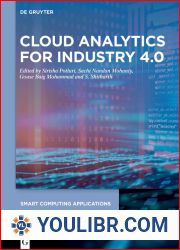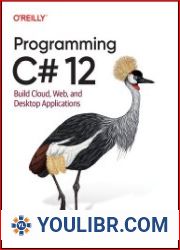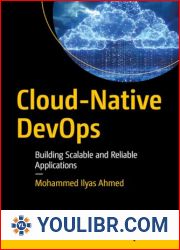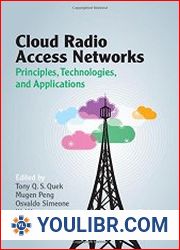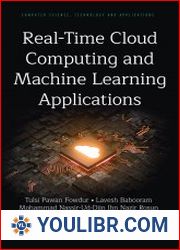
BOOKS - Cloud Security Concepts, Applications and Practices

Cloud Security Concepts, Applications and Practices
Author: Jamuna S. Murthy, Siddesh G.M., Srinivasa K.G.
Year: 2025
Format: PDF
File size: 10.1 MB
Language: ENG

Year: 2025
Format: PDF
File size: 10.1 MB
Language: ENG

Cloud Security Concepts, Applications, and Practices: A Comprehensive Guide In today's digital age, technology continues to evolve at an unprecedented pace, shaping the world we live in and influencing every aspect of our lives. One of the most significant technological advancements in recent years is cloud computing, which has revolutionized the way we share and access data. As more and more organizations adopt cloud-based solutions, it is essential to understand the security implications of this shift and how to ensure the integrity and confidentiality of their data. Cloud Security Concepts, Applications, and Practices offers a comprehensive guide to the challenges, best practices, and latest developments in cloud security, providing readers with the knowledge they need to navigate this rapidly changing landscape. The Book's Structure The book is divided into four parts, each focusing on a critical aspect of cloud security: Part I: Fundamentals of Cloud Computing This section provides an overview of cloud computing, including deployment models, service models, and the benefits of cloud computing. It covers the basics of cloud security, setting the stage for the more advanced topics covered in subsequent sections. Part II: Risk Management and Threat Analysis In this part, the authors delve into the critical aspects of risk management and threat analysis in cloud computing.
Концепции, приложения и методы обеспечения безопасности облачной среды: комплексное руководство В современную цифровую эпоху технологии продолжают развиваться беспрецедентными темпами, формируя мир, в котором мы живем, и влияя на каждый аспект нашей жизни. Одним из самых значительных технологических достижений последних лет являются облачные вычисления, которые произвели революцию в том, как мы делимся данными и получаем к ним доступ. По мере того, как все больше организаций внедряют облачные решения, важно понимать последствия этого сдвига для безопасности и способы обеспечения целостности и конфиденциальности своих данных. Концепции, приложения и методы обеспечения безопасности облачной среды - это исчерпывающее руководство по задачам, передовым практикам и последним разработкам в области обеспечения безопасности облачной среды, предоставляющее читателям знания, необходимые для навигации в этой быстро меняющейся среде. Структура книги Книга состоит из четырех частей, каждая из которых посвящена критическому аспекту облачной безопасности: Часть I: Основы облачных вычислений В этом разделе представлен обзор облачных вычислений, включая модели развертывания, модели обслуживания и преимущества облачных вычислений. Он охватывает основы облачной безопасности, подготавливая почву для более продвинутых тем, рассматриваемых в последующих разделах. Часть II: Управление рисками и анализ угроз В этой части авторы углубляются в критические аспекты управления рисками и анализа угроз в облачных вычислениях.
Concepts, applications et méthodes de sécurité du cloud : un guide complet À l'ère numérique moderne, la technologie continue d'évoluer à un rythme sans précédent, façonnant le monde dans lequel nous vivons et influençant chaque aspect de notre vie. L'une des avancées technologiques les plus importantes de ces dernières années est le cloud computing, qui a révolutionné la façon dont nous partageons et accédons aux données. Alors que de plus en plus d'entreprises mettent en œuvre des solutions cloud, il est important de comprendre les conséquences de ce changement sur la sécurité et les moyens d'assurer l'intégrité et la confidentialité de leurs données. s concepts, les applications et les techniques de sécurité cloud sont un guide complet des tâches, des meilleures pratiques et des derniers développements en matière de sécurité cloud, fournissant aux lecteurs les connaissances dont ils ont besoin pour naviguer dans cet environnement en évolution rapide. Structure du livre livre se compose de quatre parties, chacune consacrée à un aspect critique de la sécurité du cloud : Partie I : Bases du cloud computing Cette section présente un aperçu du cloud computing, y compris les modèles de déploiement, les modèles de service et les avantages du cloud computing. Il couvre les bases de la sécurité en nuage, préparant le terrain pour des sujets plus avancés traités dans les sections suivantes. Partie II : Gestion des risques et analyse des menaces Dans cette partie, les auteurs examinent les aspects critiques de la gestion des risques et de l'analyse des menaces dans le cloud computing.
Conceptos, aplicaciones y técnicas de seguridad en la nube: una guía integral En la era digital actual, la tecnología sigue evolucionando a un ritmo sin precedentes, configurando el mundo en el que vivimos e influyendo en cada aspecto de nuestras vidas. Uno de los avances tecnológicos más significativos de los últimos es la computación en la nube, que ha revolucionado la forma en que compartimos y accedemos a los datos. A medida que más organizaciones implementan soluciones basadas en la nube, es importante comprender las implicaciones de este cambio en la seguridad y cómo garantizar la integridad y privacidad de sus datos. Conceptos, aplicaciones y técnicas de seguridad en la nube es una guía exhaustiva de tareas, mejores prácticas y últimos desarrollos de seguridad en la nube que proporciona a los lectores los conocimientos necesarios para navegar en este entorno que cambia rápidamente. Estructura del libro libro consta de cuatro partes, cada una dedicada a un aspecto crítico de la seguridad en la nube: Parte I: Fundamentos de la computación en la nube Esta sección ofrece una visión general de la computación en la nube, incluyendo modelos de implementación, modelos de servicio y beneficios de la computación en la nube. Cubre los fundamentos de la seguridad en la nube, preparando el terreno para temas más avanzados tratados en secciones posteriores. Parte II: Gestión de riesgos y análisis de amenazas En esta parte, los autores profundizan en los aspectos críticos de la gestión de riesgos y el análisis de amenazas en cloud computing.
Cloud-cherheitskonzepte, -Anwendungen und -Techniken: ein umfassender itfaden Im heutigen digitalen Zeitalter entwickeln sich Technologien in einem beispiellosen Tempo weiter, prägen die Welt, in der wir leben, und beeinflussen jeden Aspekt unseres bens. Einer der bedeutendsten technologischen Fortschritte der letzten Jahre ist das Cloud Computing, das die Art und Weise, wie wir Daten teilen und darauf zugreifen, revolutioniert hat. Da immer mehr Unternehmen Cloud-Lösungen implementieren, ist es wichtig, die Auswirkungen dieser Verschiebung auf die cherheit und die Möglichkeiten zur Gewährleistung der Integrität und Vertraulichkeit ihrer Daten zu verstehen. Cloud-cherheitskonzepte, -Anwendungen und -Techniken sind ein umfassender itfaden für die Herausforderungen, Best Practices und neuesten Entwicklungen im Bereich der Cloud-cherheit, der den sern das Wissen vermittelt, das sie benötigen, um in dieser sich schnell verändernden Umgebung navigieren zu können. Die Struktur des Buches Das Buch besteht aus vier Teilen, die sich jeweils mit dem kritischen Aspekt der Cloud-cherheit befassen: Teil I: Grundlagen des Cloud Computing Dieser Abschnitt bietet einen Überblick über das Cloud Computing, einschließlich Bereitstellungsmodellen, Servicemodellen und den Vorteilen des Cloud Computing. Es deckt die Grundlagen der Cloud-cherheit ab und bereitet den Boden für fortgeschrittenere Themen, die in den folgenden Abschnitten behandelt werden. Teil II: Risikomanagement und Bedrohungsanalyse In diesem Teil gehen die Autoren auf kritische Aspekte des Risikomanagements und der Bedrohungsanalyse im Cloud Computing ein.
''
Bulut Güvenliği Kavramları, Uygulamaları ve Uygulamaları: Kapsamlı Bir Rehber Teknoloji, içinde yaşadığımız dünyayı şekillendiren ve hayatımızın her yönünü etkileyen, günümüzün dijital çağında benzeri görülmemiş bir hızla gelişmeye devam ediyor. Son yılların en büyük teknolojik gelişmelerinden biri, verileri nasıl paylaştığımız ve eriştiğimiz konusunda devrim yaratan bulut bilişimdir. Daha fazla kuruluş bulut çözümlerini benimsedikçe, bu değişimin güvenlik etkilerini ve verilerinin bütünlüğünü ve gizliliğini nasıl sağlayacaklarını anlamak önemlidir. Bulut güvenliği kavramları, uygulamaları ve uygulamaları, okuyuculara bu hızla değişen ortamda gezinmek için ihtiyaç duydukları bilgileri sağlayan zorluklar, en iyi uygulamalar ve bulut güvenliğindeki en son gelişmeler için kapsamlı bir kılavuzdur. Kitap Yapısı Kitap, her biri bulut güvenliğinin kritik bir yönüne odaklanan dört bölümden oluşmaktadır: Bölüm I: Bulut Bilişimin Temelleri Bu bölüm, dağıtım modelleri, hizmet modelleri ve bulut bilişimin faydaları dahil olmak üzere bulut bilişime genel bir bakış sunar. Bulut güvenliğinin temellerini kapsar ve sonraki bölümlerde ele alınan daha gelişmiş konular için zemin hazırlar. Bölüm II: Risk Yönetimi ve Tehdit Analizi Bu bölümde, yazarlar bulut bilişimde risk yönetimi ve tehdit analizinin kritik yönlerini incelemektedir.
مفاهيم وتطبيقات وممارسات الأمن السحابي: تستمر تقنية الدليل الشامل في التطور بوتيرة غير مسبوقة في العصر الرقمي اليوم، وتشكيل العالم الذي نعيش فيه والتأثير على كل جانب من جوانب حياتنا. أحد أكبر التطورات التكنولوجية في السنوات الأخيرة هو الحوسبة السحابية، والتي أحدثت ثورة في كيفية مشاركة البيانات والوصول إليها. مع اعتماد المزيد من المؤسسات للحلول السحابية، من المهم فهم الآثار الأمنية لهذا التحول وكيفية ضمان سلامة وسرية بياناتها. تعد مفاهيم وتطبيقات وممارسات الأمن السحابي دليلاً شاملاً للتحديات وأفضل الممارسات وآخر التطورات في أمن السحابة التي تزود القراء بالمعرفة التي يحتاجونها للتنقل في هذه البيئة سريعة التغير. هيكل الكتاب يتكون الكتاب من أربعة أجزاء، يركز كل منها على جانب مهم من الأمن السحابي: الجزء الأول: أساسيات الحوسبة السحابية يقدم هذا القسم لمحة عامة عن الحوسبة السحابية، بما في ذلك نماذج النشر ونماذج الخدمة وفوائد الحوسبة السحابية. وهو يغطي أساسيات الأمن السحابي، مما يمهد الطريق للمواضيع الأكثر تقدمًا التي تغطيها الأقسام اللاحقة. الجزء الثاني: إدارة المخاطر وتحليل التهديدات في هذا الجزء، يتعمق المؤلفون في الجوانب الحاسمة لإدارة المخاطر وتحليل التهديدات في الحوسبة السحابية.







